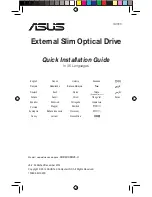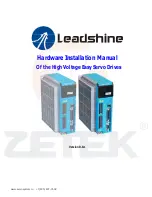
147
Appendix B: EMC Installation
Appendix B: EMC Installation
Electromagnetic Compatibility (EMC) Installation Guidelines
Introduction
The concept of Electromagnetic Compatibility (EMC),that an electrical device
should operate as intended without being disturbed by, or disturbing other
electrical devices,has always been an implicit part of every successful industrial
control installation.Recent regulation changes,particularly in the European Union,
have explicitly and formally defined EMC.This appendix is intended to help
professionally qualified OEMs,machine builders,and end users successfully install
and operate IDC’s single and dual axis servo drives and controls (Models:B8961
and B8962) in compliance with these EMC regulations.
There are two components to Electromagnetic Compatibility.The first,that an
electrical device not disturb the operation of other electrical devices,is covered by
limits on the power levels of both emitted and conducted electrical magnetic
noise.The second component,the ability to operate in the presence of
electromagnetic noise,is covered by specifications detailing required immunity
levels from electromagnetic phenomena that would normally occur in an industrial
environment.
The EMC emissions limits can be divided into two categories.The first, radiated
noise,is primarily intended to protect nearby radio communication type
equipment.These limits cover a frequency range from 30 MHz to 1 GHz. Poorly
grounded motor and power cables are usually the primary cause for high levels of
noise in this frequency range.The grounding and cabling recommendations in this
appendix give detailed instructions for limiting this radiated noise to safe levels.
The second set of emission limits are placed on noise conducted back onto the AC
power mains.High frequency switching power electronics,like those commonly
found in industrial ser vo motor drives,can,if not properly filtered,conduct
unacceptable limits of noise back onto the AC power lines.This noise could
adversely affect other devices.It is worth noting that there is a two order of
magnitude safety margin between the allowed noise limits and the required
immunity limits.This means that a machine level, rather than component le vel,
application of the following grounding and cabling practices is feasible without
compromising the operation of the individual components.
The EMC immunity standards cover a broad range of electromagnetic phenomena
including:
• Electrostatic Discharges
• RF electromagnetic fields
• Fast transient and power surges into the AC power supply
• Fast transient bursts on the motor and encoder wiring.
Fundamentally robust electrical design is the best defense against this kind of
unpredictable noise,but good grounding practices can help pr event intermittent,
difficult to track down,noise related problems.
Since the electromagnetic immunity of the Smart Drive is almost exclusively a
function of the design,the installation techniques followed will not positively or
negatively impact this built-in immunity.The electromagnetic emissions of the
machine,on the other hand,are almost completely a function of the installation
Summary of Contents for B8961
Page 111: ...109 Chapter 7 Programming with Serial Communication...
Page 132: ...B8961 and B8962 User Manual 130...
Page 136: ...B8961 and B8962 User Manual 134 B8961 and B8962 Hardware Connections...
Page 137: ...135 Chapter 8 Hardware Reference B8961 and B8962 Input and Output Schematics...
Page 138: ...B8961 and B8962 User Manual 136 Connecting IDC Limit Switches to the B8961 2...
Page 156: ...B8961 and B8962 User Manual 154...










































